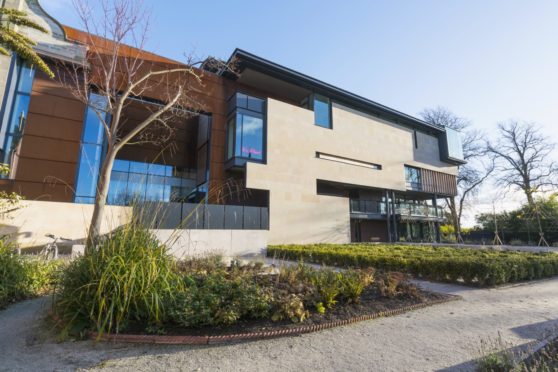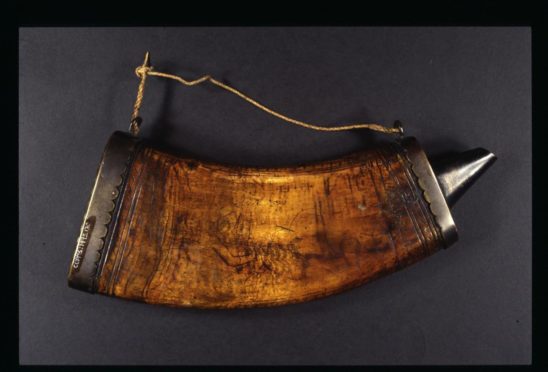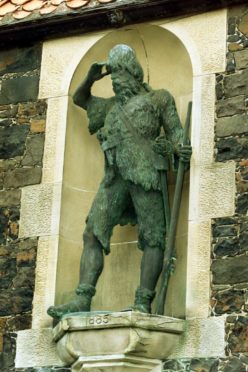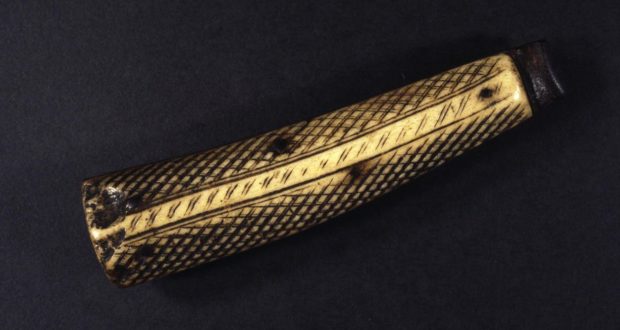The real-life Robinson Crusoe’s desert island objects have gone on show in Dunfermline.
A knife handle and powder horn, thought to have belonged to Fife-born seaman Alexander Selkirk, form part of a family-friendly exhibition.
Selkirk is widely recognised as the inspiration for Daniel Defoe’s Robinson Crusoe.
And the objects were in the hands of Selkirk’s family before being handed over to Fife’s museums service in 1970.
The exhibition originally launched last year but had to close its doors during lockdown.
Fife’s famous castaway was born in Lower Largo in 1676 and spent most of his life at sea as a privateer – a sailor authorised to raid enemy ships in times of war.
Following a spat with his captain in 1704, Selkirk asked to be put ashore on Juan Fernandez Island, 420 miles west of Chile, where he lived for four years.
The island has since been renamed Robinson Crusoe Island.
Among his possessions was a pistol, gunpowder, a knife, a hatchet, navigation instruments, a bible, a flask of rum and enough food for a few days.
The powder pouch, less than one foot long, came home with Selkirk.
However, the knife’s blade snapped from its handle and is still lost on the island.
Selkirk was eventually rescued by another privateer in 1709.
He joined the crew and returned to Britain a wealthy man thanks to his share of the ship’s loot.
His memoirs are widely thought to have inspired Defoe.
Dig on Robinson Crusoe Island
The chairman of Fife Cultural Trust, Dr David Caldwell, led an archaeology dig on Robinson Crusoe Island in 2005.
He said the objects can transport the viewer to a far-off place.
“Many of us sitting in an office or, these days, at home have looked out the window and thought ‘I wish I wasn’t here, but on a Pacific island leading a different life’,” he said.
“This idea of being stranded on a desert island, free from every day constraints, is something that is quite deep in our psyche and we owe it all to Selkirk and Defoe.
“These objects take us right there and help us enter into that story and glimpse something of the reality of that life.”
The Dunfermline exhibition
The objects are part of Explore! Travellers and Trailblazers, which opened briefly at the end of last year.
It has now reopened at Dunfermline Carnegie Library and Galleries.
Artefacts from six continents feature in the show.
Explore! features a host of intriguing objects from far flung places, including Japan, China, South Africa, India and Australia, as well as the depth of the oceans.
Exhibition curator Lesley Lettice said: “We are all explorers from the day we are born but you don’t always have to leave these shores to go on your own voyage of discovery.”



